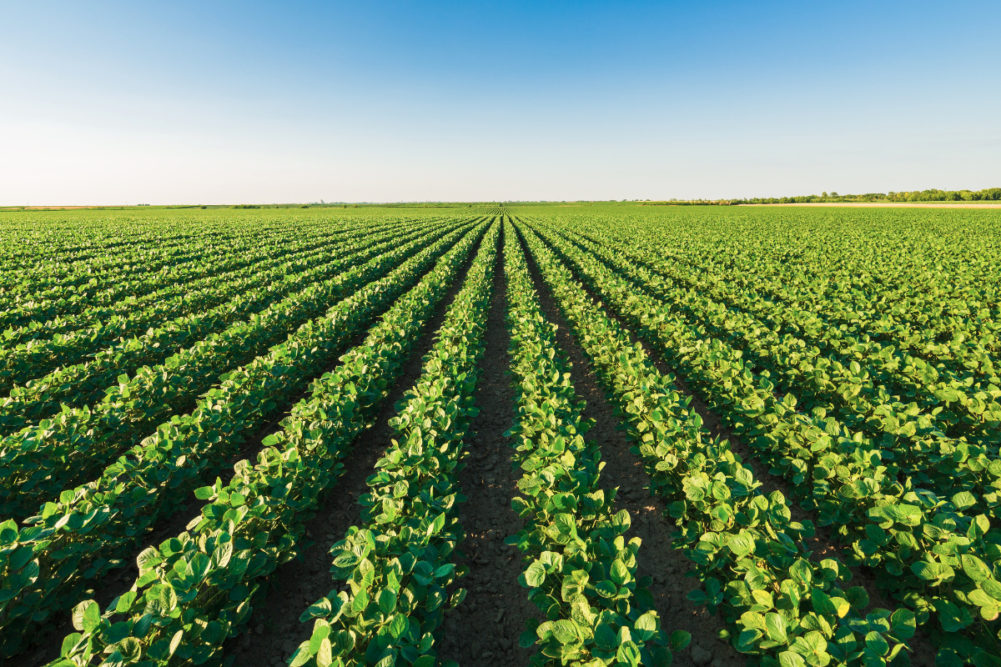GLADSTONE, MO. — Amy te Plate-Church looks forward to talking about gene editing with her neighbor, a physician and “No. 1 champion” for vaccines, she said.
“Yet she’s a bit skeptical about what’s happening in food production,” Ms. Plate-Church, a spokesperson for The Center for Food Integrity, Gladstone, said in a March 18 webinar.
Neighbors, family and friends might be interested to hear that gene editing has led to progress in the field of medicine, including through vaccines, and it also may benefit agriculture and the food industry. Gene-editing technologies like CRISPR and TALEN help to create pest-resistant and disease-resistant crops, healthier crop varieties, and more nutritious crop varieties.
The Center for Food Integrity lists five ways to communicate with consumers on the benefits of gene editing:
- Demonstrate benefits that align with public desires,
- start conversations by talking about how gene editing has advanced human medicine,
- talk about evolution, not revolution,
- leverage spokespeople who are credentialed and relatable, show integrity, and share consumers’ values, and
- give analogies.
Industry should recognize that benefits consumers find interesting are different from those that interest farmers. Environmental stewardship ranks at the top of many consumer surveys. Disease resistance, whether it be related to humans, animals or plants, ranks highly, too.
The Royal Swedish Academy of Sciences last October awarded the Nobel Prize in Chemistry jointly to Jennifer A. Doudna, PhD, of the United States and Emmanuelle Charpentier, PhD, of Germany. The two women developed CRISPR-Cas9, a gene-editing technology that allows scientists to rewrite DNA in any organism with efficiency and precision.
Consumers may be most interested in how gene editing helps medicine.
“Most of us know someone who has been impacted by cancer, leukemia, sickle cell or any other disease that medical professionals and scientists are working on to find solutions through gene editing,” Ms. Plate-Church said. “Gene editing truly can be life-saving.”
Know your audience when talking about the COVID-19 vaccines, however, since it is a “polarizing topic,” Ms. Plate-Church said.
“I would definitely connect with those who are embracing and who have welcomed the vaccine,” she said.
Describing gene editing as a revolution could scare consumers.
“In fact, some (consumers) tell us it makes them more skeptical or more concerned because of the newness — that it’s less tested or there are unintended consequences that we are not aware of,” Ms. Plate-Church said.
“With gene editing you can turn genes on and off similar to a light switch.” — Amy te Plate-Church, The Center for Food Integrity
A better approach would be to talk about how gene editing is another step in agricultural evolution. Before gene editing, there was hybrid breeding, which involves crossing two genetically different plants to develop hybrids that perform better, and cross breeding, which combines good characteristics from two parent plants to develop improved varieties.
“Gene editing is just the latest in a long, long list of technologies and tools that humans have applied to crop improvement for literally thousands of years,” said Ed Anderson, PhD, senior director of research and executive director at the Iowa Soybean Association and North Central Soybean Research Program.
Spokespeople for gene editing may be scientists, experts from academic institutions and regulatory authorities. Farmers are seen as “trusted” messengers, Ms. Plate-Church said.
She gave two analogies to gene editing.
“With gene editing you can turn genes on and off similar to a light switch,” she said.
The second analogy compared DNA, which provides the information for building every living thing, to blueprints, which provide information for building a house.
“Builders can make small changes to a blueprint like moving a cabinet or perhaps removing it or adding a feature,” Ms. Plate-Church said. “Likewise, scientists can make small, targeted changes in DNA without changing the foundation.”
Dr. Anderson spoke about how gene editing benefits farmers in areas such as increasing yield, improving crop quality and making crops more resistant to stress. Gene editing could help with the regulatory process as well since gene editing is not considered a GMO in some cases.
“The technology is fast and efficient and precise, making it highly cost-effective,” he said.
Industry in the past focused almost exclusively on regulation when it came to new technologies like gene editing, said Charlie Arnot, chief executive officer of The Center for Food Integrity.
“That is essential, but it is not sufficient today in order to successfully bring gene editing to market because there are other stakeholders that can actually influence and control whether or not the technology is used in food production,” he said.
Food companies, when evaluating new technology, consider whether it is consistent with their values and their brands and whether it incorporates broader benefits to society. “Consumer influencers,” meaning those active in social media and other communication channels, influence acceptance of new technology, too.
“So we have to understand that if we’re going to successfully introduce new technology, we have to cross a regulatory hurdle, we have to be able to successfully engage and build the support of branded food companies, and we have to be able to win the support of consumer influencers,” Mr. Arnot said “If we have a strategy that ignores one of those three key elements, that strategy is incomplete.”





